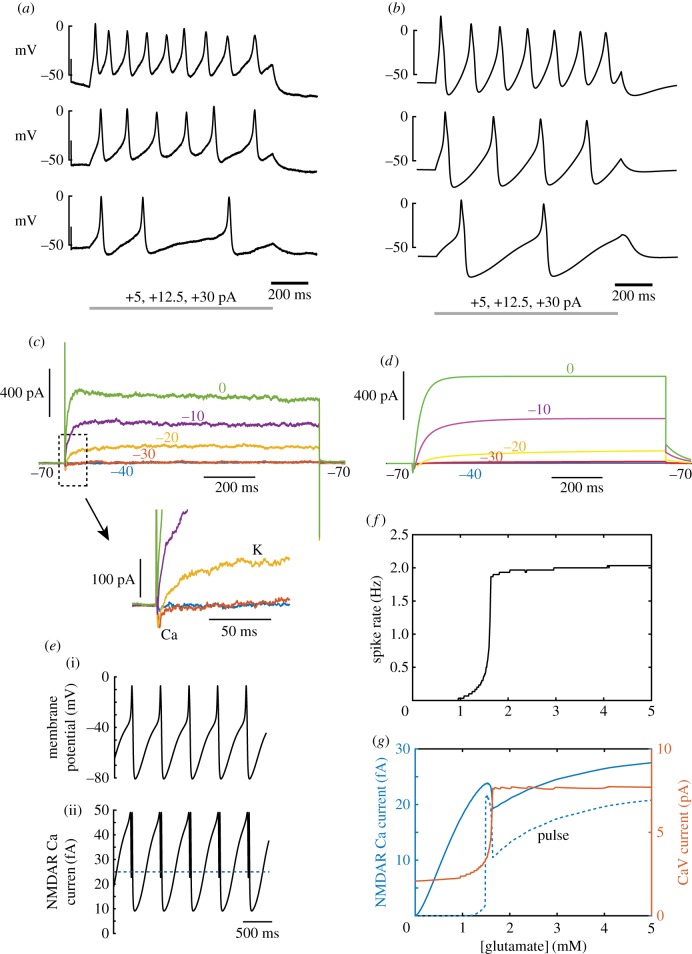Figure 8.
Effect of excitability and NMDAR voltage-dependence on calcium influx in a computational model. (a) Experimentally-recorded action potential firing in response to injection of increasing levels of current in current-clamp. (b) Corresponding responses for the model, containing 11 NMDARs. (c) Voltage-clamp currents for a family of different depolarizations from −70 mV, as indicated, showing a small inward CaV current and a long-lasting KV current activated by depolarization. Inset shows the inward current in more detail. (d) Corresponding responses of the model. (e) (i) Action potential firing in the model with a bias current of +4.6 pA and application of 5 µM glutamate. (ii) The corresponding calcium current (10% of total current) through NMDA receptors. (f) Action potential firing rate as a function of glutamate concentration, with a constant +4.6 pA bias current. (g) Calcium current as a function of glutamate concentration. CaV current (red, scale at right) is much greater than NMDAR calcium current. Total NMDAR calcium current (blue scale at left) rises steadily with glutamate concentration, apart from a temporary reduction at the point where spike rate rises most rapidly. The pulse NMDAR calcium current (current greater than half-amplitude, indicated by dotted line in the lower panel of (e)), shows a much sharper threshold behaviour, also showing an extremely high level over a narrow range of glutamate just above the firing threshold.

